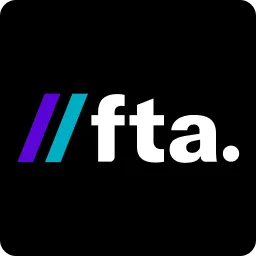The Hidden Costs of Freelancers (and Why In-House Gig Teams Are the Future)
Most businesses assume freelancers are cheaper until the real costs of time and coordination surface. Yes, even in-house gig teams need an initial brand brief. The difference is that you brief them once.
They live within your system, understand your tools, and build ongoing context with every project. Freelancers, on the other hand, need to be re-trained and re-aligned every time you engage someone new or expand the scope. Over time, that repeated context-setting becomes one of the biggest hidden costs that leaders overlook.
Big brands, at times, depend on freelancers for speed and lower upfront cost. The logic seems simple. Pay only for the tasks you need and avoid payroll costs. Yet the real cost is rarely the invoice alone. The true bill shows up in onboarding time, rework, delays, and the hit to consistency.
Here, at FTA Gigs, we unpack those hidden costs with clear examples. Then we show why building an in-house gig team is often the smarter move for organisations that rely on marketing, content, design, data or product work every week.
If your brand wants control, repeatable quality, and faster delivery, this will help you make informed choices.
What do we mean by the hidden costs of freelancers?
The hourly rate is the visible part. What sits below the surface drives the real spend.
- Training and onboarding
You still need to explain your market, ICP, voice, tools, templates, approvals, and data sources. Even the best specialist needs context. That time comes from your leaders or managers. It is a cost. - Mis-scoped work
A tight brief saves money. A loose one invites misalignment. That creates new rounds of edits, scope creep, and a slipping timeline. You pay for those hours, and you also pay in momentum. - Revision loops
Every extra pass burns time. A single change request can trigger updates across files, copy, and design. Multiply that by three touchpoints and you lose a week. - Communication overhead
Async communication helps, yet every handoff invites issues. Status pings, file versions, access rights, and tool permissions all add friction. A thirty-minute issue can cascade into a day.
An example to help you better understand this -
A business hires a freelancer at a lower hourly rate than an agency. The first tasks look cheap. By month two, the team spends ten extra hours every fortnight on clarifications, edits, and merging work from two different freelancers. The invoice remains low. The total cost of time and delay thus exceeds, hampering the project's growth.
Freelancers shine on small, well-defined tasks that need specialist skill. Think of a landing page headline polish, a single illustration, a one-time video edit, a short analytics setup, or a product demo script. The scope is tight, the outcome is clear, and handoffs are minimal. You pay for a task, and you get it done.
They also fit when you want to test a new channel or format without committing to a team. One ad concept for a new market. One explainer video to validate a narrative. One micro-audit before a larger program. Flexibility is the win.
Trouble begins when tasks spill over and need sustained context. An initial three-page website expands into nine pages and two design systems. A content calendar needs weekly cadence, brand memory, and cross-functional coordination with sales and product. Multiple freelancers create overlapping workstreams. Inconsistency creeps in. Timelines drift. You start doing project management rather than market making.
When you need an ongoing rhythm with fast iteration around a single strategy, a roster of independent freelancers rarely behaves like a team. The moment quality depends on context, the coordination tax goes up, and the savings go down.
Cost comparison matrix explained in plain numbers for India
Let us run a simple comparison across three options for a typical marketing function. Assume you need strategy support, content, design, and performance execution for one quarter. We will use realistic Indian numbers. Your market and seniority mix may vary, but the pattern holds.
Assumptions
Base freelancer rate is - 1,500 INR per hour
- Hidden costs for freelancers
Onboarding and training
10 hours in month one and 4 hours ongoing each month
Revision multiplier
Plus 20% on planned hours
Coordination time
8 hours per month of manager time
Turnover impact
Every six months, expect a ramp cost equivalent to 8 hours - Part-time hire
Monthly salary 70,000 INR
Benefits and compliance 15%
Seat and tools 5,000 INR
Manager time 8 hours per month - Full-time hire
Monthly salary 120,000 INR
Benefits and compliance 18%
Seat and tools 7,000 INR
Manager time 12 hours per month - Internal gig team through a curated pool
Blended rate 1,100 INR per hour
Platform or program fee: 10,000 INR per month
Context ramp amortised 3,000 INR per month after the first quarter.
Manager time 4 hours per month
Monthly cost comparison for 80 hours of output
What the numbers say -
If your need is steady, part-time, or an internal gig, the team delivers more predictable output for close to or below the all-in cost of ad hoc freelancers. Full-time becomes efficient when you exceed 120-140 hours of monthly work, or when the role is mission-critical and cannot slip.
The key drivers behind these totals are consistent across categories. Training time is either paid once and amortised over months, or paid repeatedly. Oversight can be a hidden tax on your highest-paid people or a structured role inside the model. Turnover forces you to reset context, or a stable pool absorbs it. Workflow sync is either ad hoc or baked into one set of tools and rituals.
Numbers change by city and seniority. The pattern stays the same. What looks inexpensive per hour becomes expensive per outcome once you factor in time, predictability, and leadership focus.
What in-house or hybrid gig teams bring to the table
An in-house team carries your brand context by default. They know the backstory, the shortcuts, the decisions you will never make again, and the risks you will never take again. That memory reduces the brief length and review time. It also tightens feedback loops. You do not need to re-explain what a good asset looks like. People already know.
Consistency follows. Voice, layout, data definitions, and file structures look the same across projects. That consistency compounds over a year. You spend less time fixing seams and more time improving core assets.
Iteration becomes faster because everyone shares tools and rituals. A designer and a copy lead can pair in real time. A performance specialist can pull yesterday’s numbers and sit with the same team that made last week’s creative. You get fewer handoffs and more throughput.
Team culture matters too. People who work together every week start to predict each other. They get comfortable pushing back and proposing better options. That candour is brutal to rent by the hour.
Yes, an in-house team brings a higher fixed cost. Salaries, benefits, and software seats add up. The difference is utilisation. If you use those skills heavily, the fixed cost pays itself back. A team that ships every week at a stable quality level beats a cheaper per-hour setup that slips every second week. The cost per result, not the cost per hour, is what senior leaders should optimise for.
Consider how a specialist agency in a regulated field operates. A medtech-focused group such as Podymos thrives because its people hold deep domain context. Internal gig teams can mirror that advantage for your brand. They carry your rules and your nuance forward, project after project.
The rise of in-house gig teams or internal freelance pools
There is a third path between ad hoc freelancers and full-time payroll. Build a curated pool of independent talent who operate like an in-house unit. They use your processes and tools, learn your business, and commit to response times and working norms. You get the flexibility of variable capacity with the reliability of a team that knows you.
The model works like this. You identify the roles you need across a quarter. You recruit two or three proven specialists for each role. You standardise onboarding once. You document workflows, file naming, brand voice, and review gates. You set up one shared workspace. You add a coordinator who protects the scope and schedules. You now have an internal marketplace of people who feel like your team, even if they are not on payroll.
The benefits are clear. Scalability comes from adding capacity without changing how you work. Cost control comes from committing to a known number of hours and avoiding context rebuilds. Agility comes from access to specialists on short notice who already understand your environment.
FTA Gigs is built to make this model real. You can connect with vetted talent, set up governance, and integrate them into your stack. You keep knowledge in the system rather than scattering it across inboxes. You track work by outcomes. The more you use the pool, the cheaper each unit of output becomes.
When should you shift from ad hoc freelancers to a gig team?
- Clear signs you are ready
You repeatedly hire the same skills month after month. Your managers spend more time clarifying than approving. Quality varies across assets. Your timelines slip when two or three independent freelancers must coordinate. Business growth demands speed and predictability. - Steps to transition with low risk
- Identify the core skills
Look at the last three months of completed work. Tag the skills that repeat. Common examples are copy, design, motion, performance analytics, marketing ops, and web. - Define the workflow
Write the path from brief to handoff. Include inputs, owners, checkpoints, and acceptance criteria. Keep it lean. A three-stage path is often enough -- Brief accepted
- Draft or first pass
- Final with checklist
- Create shared standards
Templates, tone of voice, design tokens, file naming, and version rules. The goal is to make the right way the easy way. - Start with a pilot pod
Pick two to four freelancers for a 6-week sprint. Bundle them as a pod with one lead who owns capacity and delivery. Give them one source of truth for tasks and assets. - Measure what matters
Cycle time from brief to done. Revision count per asset. Manager hours. Quality score at QA. Compare to your baseline. - Set governance
Define SLAs for response times, handoffs, and approvals. Schedule a weekly twenty-minute review to spot blockers early. Keep a monthly retrospective for continuous improvement. - Use a platform that reduces admin
Centralise onboarding, permissions, contracts, invoicing, and time tracking. Protect your team from context switching. This is where a service like FTA Gigs removes friction and keeps your managers focused on outcomes. - Scale and stabilise
Once the pilot pod hits your targets, expand the bench. Keep the same standards and workflow. Rotate specialists only after they complete the same onboarding.
The Future Belongs to Businesses That Build Their Own Gig Teams
Freelancers remain a valid choice for precise, contained jobs. The trap is to treat every need as a one-off task. If your work is frequent and interconnected, the hidden costs of ad hoc freelancing soon exceed the invoice. You pay in time, quality, and missed opportunities.
An in-house gig team gives you the best of both worlds. Flexible capacity with shared context. Faster cycles with fewer revisions. The total cost is transparent, and the output is consistent.
Do you want more traffic?

How to Scale Personalisation in ABM Without Losing Focus?
.png)
Why Small Tasks Are the Next Big Revolution in Business Efficiency?











